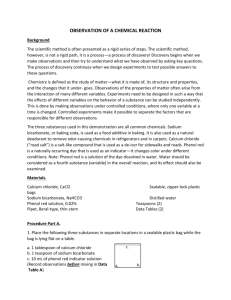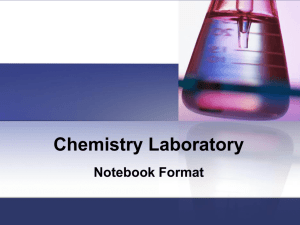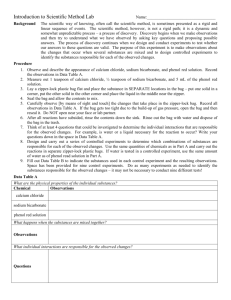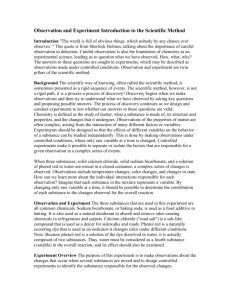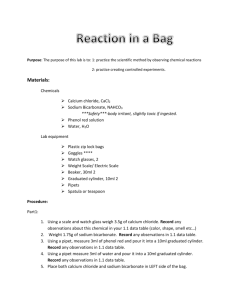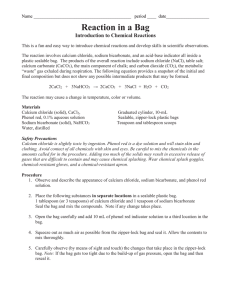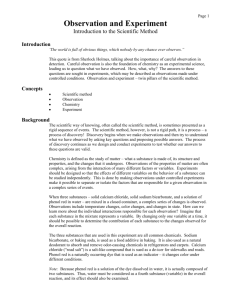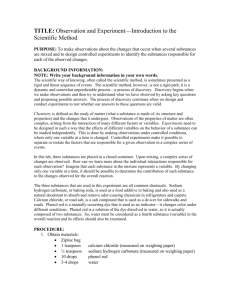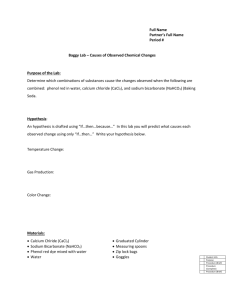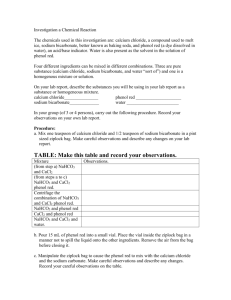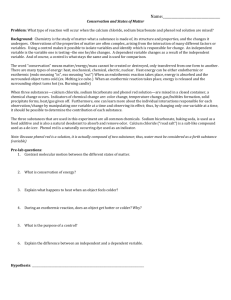Chemistry Lab: Observation & Experimentation - Qualitative Analysis
advertisement
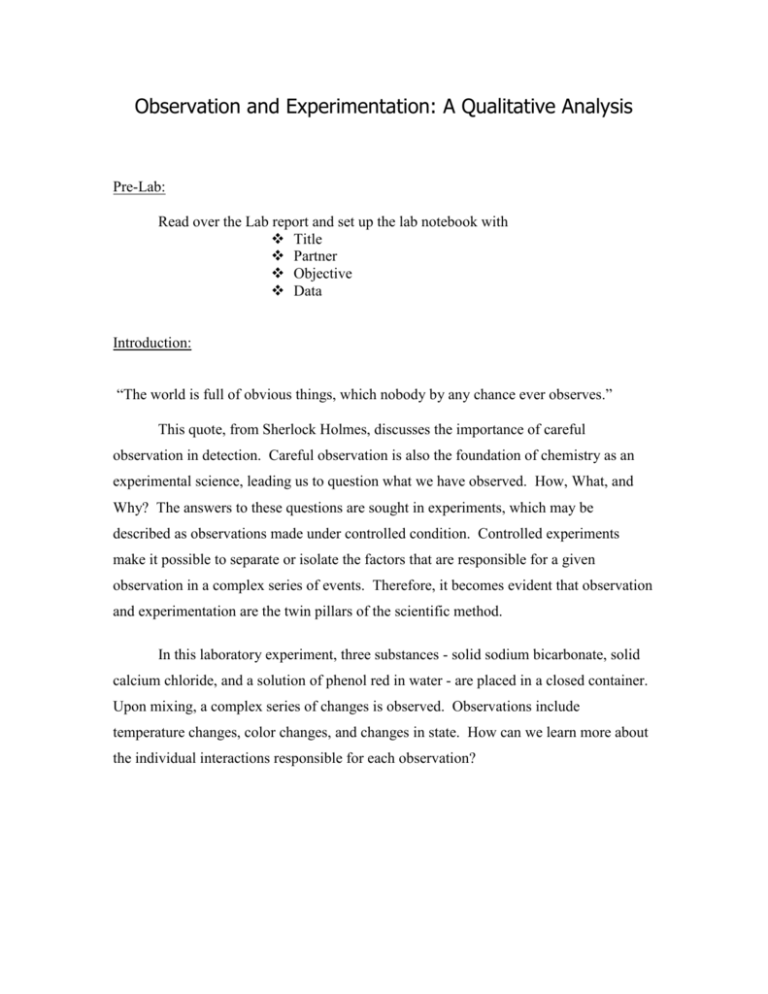
Observation and Experimentation: A Qualitative Analysis Pre-Lab: Read over the Lab report and set up the lab notebook with Title Partner Objective Data Introduction: “The world is full of obvious things, which nobody by any chance ever observes.” This quote, from Sherlock Holmes, discusses the importance of careful observation in detection. Careful observation is also the foundation of chemistry as an experimental science, leading us to question what we have observed. How, What, and Why? The answers to these questions are sought in experiments, which may be described as observations made under controlled condition. Controlled experiments make it possible to separate or isolate the factors that are responsible for a given observation in a complex series of events. Therefore, it becomes evident that observation and experimentation are the twin pillars of the scientific method. In this laboratory experiment, three substances - solid sodium bicarbonate, solid calcium chloride, and a solution of phenol red in water - are placed in a closed container. Upon mixing, a complex series of changes is observed. Observations include temperature changes, color changes, and changes in state. How can we learn more about the individual interactions responsible for each observation? Background Information: Define the scientific method and describe how it relates to this lab experiment. Discuss how observations and experiments are necessary parts of chemistry. What is a control experiment and why did we need to use them? Procedure: 1. Begin with a clean, dry bag. Place 1 scoop of calcium chloride in the bottom left corner of the bag. Place 1 scoop of sodium bicarbonate in the bottom right corner of the bag. Be careful to not let them mix yet! 2. Carefully add 2 droppers full of phenol red in the center of the bag. 3. Seal completely, and allow the chemicals to mix. 4. Record all observations. 5. Rinse and dry the bag thoroughly. 6. Invent some control experiments that will help you to come to an understanding of what happened in the observed reaction. Perform these experiments and record your results in the data table. Questions: 1. Based on the results of the control experiments, what interaction among the substances seems to be responsible for the observed temperature change in the overall reaction? 2. Was there a temperature effect observed in any of the control experiments that was NOT observed in the overall reaction of the chemical substances? Explain. 3. What color change was observed in the overall reaction of the substances? Do the control experiments provide any evidence concerning the interaction(s) responsible for the observed color change? If so, what are they? 4. Is gas bubble formation something that can occur separately from color change and temperature change, or are the reactions linked? 5. Is there any evidence of a chemical change in the reactions you observed? Describe how you could tell. 6. Let’s assume that the chemical identity of calcium chloride is not changed when it is mixed with water. Suggest an experiment that could be done to prove or disprove this hypothesis. Observations Calcium Sodium Phenol Chloride Bicarbonate Red Water
